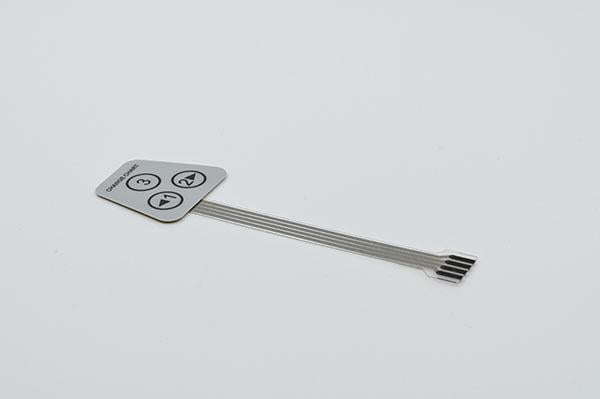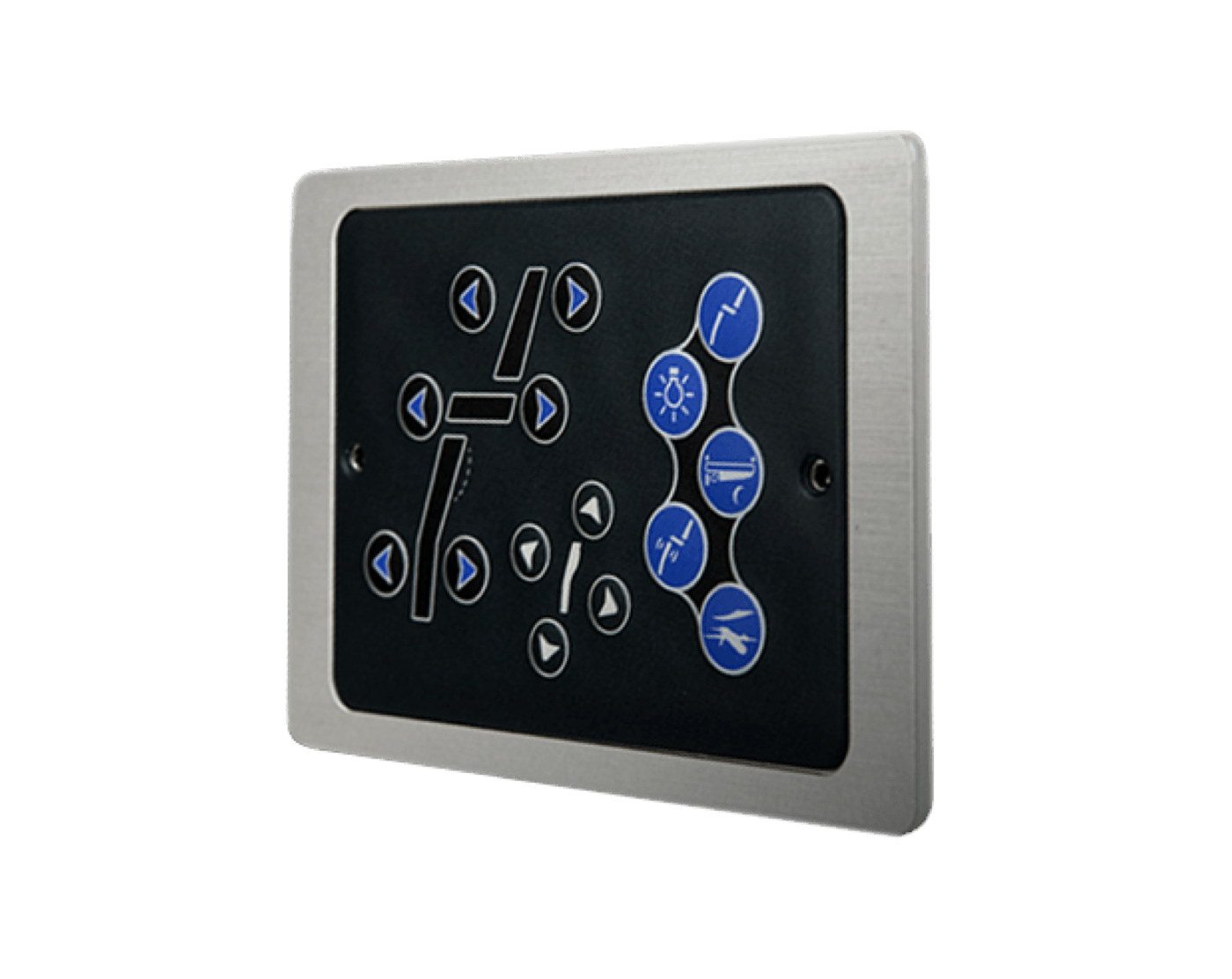An forward-thinking membrane switch manufacturer can offer modern features and materials.
An forward-thinking membrane switch manufacturer can offer modern features and materials.
Blog Article
All Concerning Membrane Switch Over: Comprehending Its Style and Performance
When you consider the control user interfaces in contemporary tools, membrane layer switches often come to mind. These elements are greater than simply buttons; they blend style and performance seamlessly. Recognizing just how they function and what makes them reliable can transform your viewpoint on daily electronic devices. There are subtleties to their style and performance that you may not be mindful of. Allow's explore what sets membrane switches over apart from various other control systems.
What Are Membrane Buttons?

Their smooth nature makes them easy to tidy and immune to dirt and dampness, an essential function in several atmospheres. Membrane layer switches can likewise be personalized relating to shape, size, and graphics, allowing producers to create unique user interfaces customized to particular items. And also, they're lightweight and slim, which assists in reducing the overall mass of tools. Generally, membrane switches play a substantial duty in improving user experience throughout a wide variety of applications.
Just How Membrane Layer Switches Over Work
When you push a trick on a membrane layer switch, it turns on a straightforward yet effective mechanism. The top layer, commonly made of versatile material, pushes down onto a conductive layer under it. This action bridges the void in between conductive traces, finishing an electrical circuit. As soon as the circuit closes, it sends a signal to the device's controller, which interprets your input.
You'll observe that the responsive feedback varies based upon the button design, using either a soft click or an extra pronounced action. As soon as you release the key, the membrane go back to its initial placement, reopening the circuit and quiting the signal. This process occurs nearly instantaneously, making sure a receptive customer experience.
Membrane buttons are preferred due to their toughness and resistance to dirt and wetness, making them suitable for numerous applications, from household devices to clinical devices. Understanding this procedure helps you appreciate their prevalent use.
Key Components of Membrane Switches
Understanding the crucial parts of membrane buttons is basic for realizing their performance and layout. The safety layer shields versus ecological factors and wear, prolonging the switch's life expectancy. By understanding these parts, you'll acquire understanding into exactly how membrane layer switches run and their importance in various applications.
Materials Used in Membrane Switch Over Design
The efficiency and longevity of membrane layer changes greatly depend on the materials used in their style. You usually experience polyester and polycarbonate as key substratums because of their outstanding stamina and adaptability. These products stand up to scratches and chemicals, making them perfect for requiring environments.
The conductive layers usually use silver or carbon, picked for their reliability and conductivity. membrane switch manufacturer. Silver gives remarkable efficiency, while carbon is an affordable choice. For the overlay, you could consider a matte or shiny finish, depending on your aesthetic demands and user experience
Make particular to select adhesives that stand up to environmental variables like temperature and moisture. Choosing the right materials will assure your membrane button stands the test of time.
Layout Considerations for Membrane Layer Buttons
While making membrane layer switches, it's crucial to think about numerous elements that influence their functionality and user experience. Beginning by concentrating on the layout and visit here switch size; make sure they're user-friendly and easy to browse. Think about the responsive feedback you want to supply-- will individuals need an obvious click or a softer touch? Furthermore, think of the materials you'll use, as they'll affect sturdiness and aesthetic appeals.
Confirm your style accommodates environmental variables, like dampness or temperature variants, which could impact performance. By very carefully thinking about these elements, you'll produce a membrane layer switch that enhances usability and fulfillment.
Applications of Membrane Switches
Membrane layer switches are versatile parts located in different applications, from commercial tools to consumer electronic devices. You'll see their influence in makers that need sturdy interfaces and in tools that benefit from smooth designs. Recognizing these applications assists linked here you appreciate the functionality and functionality of membrane layer switches in day-to-day modern technology.
Industrial Equipment Usage
When you're looking to boost the capability of commercial tools, membrane layer switches provide a dependable solution that combines resilience with easy to use layout. These switches are best for extreme settings, giving resistance to dust, moisture, and chemicals. Embrace membrane layer buttons to improve your procedures and improve total performance.
Customer Electronics Assimilation
In the domain name of customer electronics, membrane layer switches play a crucial duty in improving user communication and device functionality. You'll locate them in devices like microwaves, remote controls, and gaming consoles, supplying a seamless method to communicate with innovation. Their smooth layout enables easy combination right into different products, making controls intuitive and user-friendly. With their capacity to incorporate graphics and backlighting, you can enjoy a contemporary aesthetic that enhances the gadget's overall appearance. Membrane layer switches also ensure toughness and resistance to dust and moisture, prolonging the life-span of your electronics. By choosing membrane layer switches, you enhance not simply the functionality but also the style of your devices, making everyday interactions smooth and delightful.
Benefits and Disadvantages of Membrane Switches
While membrane buttons provide an array of advantages, they likewise feature some drawbacks that you must consider. One significant benefit is their compact style, making them perfect for space-constrained applications. They're likewise cost-efficient, supplying a resilient option with a reduced production cost. read this post here Additionally, their smooth surface is simple to tidy, boosting health in environments like healthcare facilities.

Membrane layer switches can have a shorter life expectancy contrasted to mechanical buttons, especially under heavy usage. They can also be much less responsive, which might influence user responses during procedure. Balancing these pros and cons will help you figure out if membrane layer switches are the appropriate fit for your task.
Frequently Asked Questions
How Much Time Do Membrane Switches Over Usually Last?
Membrane changes normally last in between 5 to ten years, depending upon usage and environmental problems. You'll want to assess factors like wear, direct exposure to dampness, and temperature fluctuations to assess their longevity successfully.
Can Membrane Layer Switches Over Be Custom-made for Certain Designs?
Yes, you can personalize membrane layer buttons to fit details styles (membrane switch manufacturer). You'll have the liberty to select colors, shapes, and formats that match your job's needs, ensuring they blend seamlessly with your overall visual
What Is the Expense Array for Membrane Switch Over Manufacturing?
The price array for membrane button production normally drops in between $1 and $10 per system, depending on variables like style complexity, amount, and products. You can get quotes from producers to find the best alternative.

Are Membrane Layer Switches Over Waterproof or Resistant?
Membrane layer switches can be developed to be waterproof or immune, depending upon products made use of and building methods. If you require them for wet settings, ensure you define those needs during the layout procedure.
How Do Membrane Layer Switches Compare to Traditional Switches?
Membrane switches are normally thinner and a lot more versatile than conventional buttons, providing a smooth design. They're commonly less complicated to cleanse and integrate, however could not give the responsive comments you're made use of to with mechanical options.
Final thought

Report this page